全站搜索
Search the entire website
Search the entire website
The performance of your entire crushing plant hinges on one simple principle: consistent and controlled feeding. A primary crusher that is alternately for rock and then suddenly slug-fed with a massive, un-screened load is an inefficient one. This erratic operation leads to poor product quality, accelerated wear on expensive crusher components, and ultimately, lost revenue. The key to solving this is the machine that stands guard at the very front of your line. So, the critical question is, how to choose a vibrating feeder that can deliver a smooth, steady, and properly prepared flow of material?
Making the correct vibrating feeder selection is far more than just picking a size from a catalog. It’s an engineering decision that directly impacts your plant’s throughput and profitability. A feeder that is undersized, has the wrong drive system, or lacks a proper screening section can create bottlenecks that ripple through your entire operation. This guide is our definitive answer. As a manufacturer with equipment operating in over 120 countries, ZONEDING has distilled decades of experience into a straightforward 7-step checklist. This will empower you to select the perfect vibrating feeder for your needs, ensuring your plant runs at peak efficiency.
A vibrating feeder is essentially a heavy-duty, shaking trough designed to both transport material and, crucially, to pre-screen it. It works on a simple principle: a powerful drive system creates a linear vibration that lifts and throws the material forward in a series of short “hops.” This controlled movement transforms a chaotic pile of rock from a haul truck or excavator into a uniform, manageable stream.
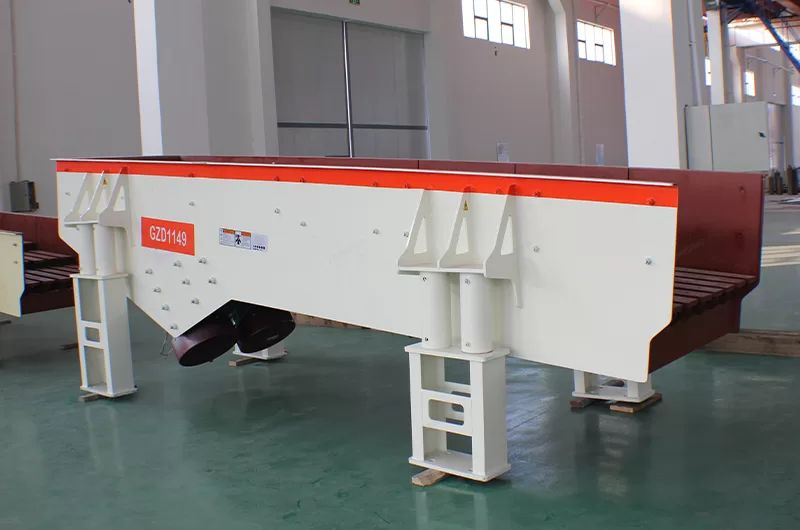
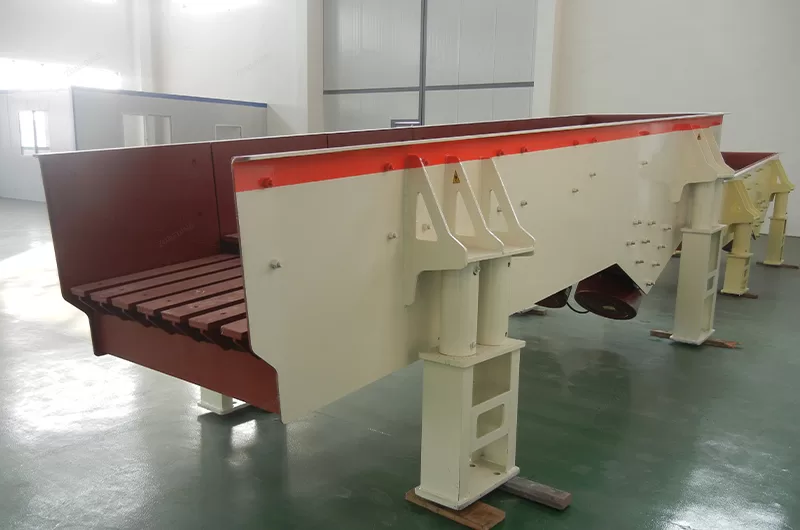
The most common and valuable type is the vibrating grizzly feeder. This design incorporates a set of heavy, spaced bars (the “grizzly section”) at the discharge end. As the material vibrates across these bars, smaller rocks, dirt, and fines fall through, bypassing the primary crusher entirely. This dual-action—feeding and screening—is what makes it an indispensable workhorse in quarries and recycling operations. At ZONEDING, our ZSW series of vibrating grizzly feeders are the proven first step in countless efficient crushing circuits.
Follow these seven steps rigorously. This process ensures your investment results in a machine that matches to your material, capacity needs, and operational goals.
The characteristics of your feed material are the absolute starting point. Don’t estimate. A proper material analysis will guide the entire selection process and prevent costly errors.
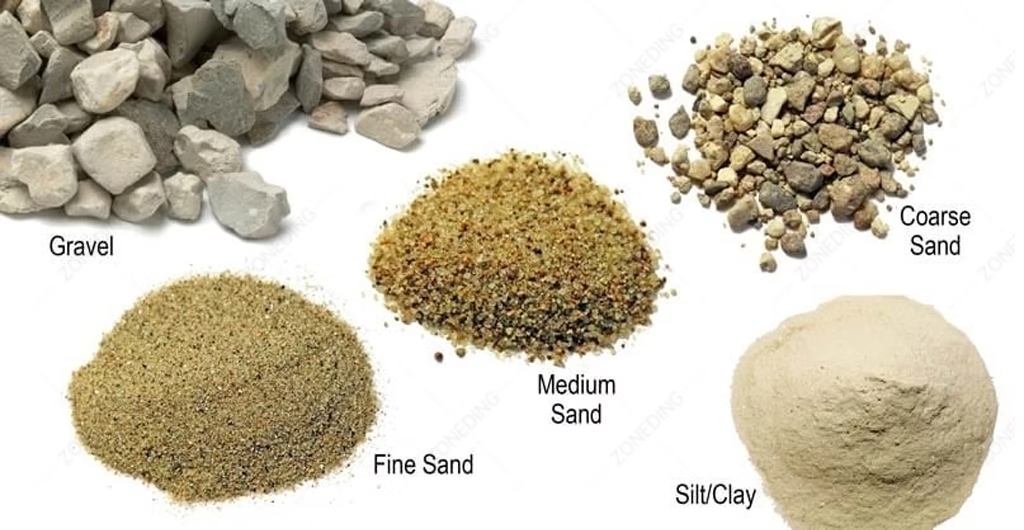
You must establish your required feed rate in tons per hour (TPH). This figure should be based on the optimal capacity of your primary crusher. A feeder’s capacity is not infinite; it’s a calculated value based on several factors.
The formula gives a good approximation: Capacity (TPH) ≈ Feeder Width (m) x Bed Depth (m) x Material Travel Speed (m/min) x Bulk Density x 60
he vibration amplitude, frequency, and operating angle will influence the “Material Travel Speed”. The key takeaway is to choose a feeder that can comfortably exceed your crusher’s nominal capacity. This gives you the flexibility to slow it down for optimal performance and speed it up to clear surges, all controlled via a Variable Frequency Drive (VFD). A feeder that has to run at 100% speed just to keep up is undersized and will be a constant source of problems.
This is the most important decision in vibrating grizzly feeder selection. The grizzly section performs “scalping”—the process of removing fines from the feed before they enter the crusher. This is incredibly beneficial.
Why Scalping is Critical:
| Use a Grizzly Section IF: | Use a Solid Pan Feeder (No Grizzly) IF: |
|---|---|
| Your feed contains >10-15% of material smaller than the crusher setting. | Your feed is “clean” with very few fines. |
| You want to maximize plant throughput. | You are handling very sticky material that will blind the grizzly bars. |
| Reducing crusher wear costs is a priority. | You are feeding a secondary or tertiary crusher with already-screened material. |
| The spacing of the grizzly bars should be set just below your primary crusher’s closed-side setting to ensure only correctly-sized material is scalped away. |
The angle at which the feeder has a direct impact on its performance.
The choice of angle is a trade-off between maximizing throughput (downslope) and maximizing screening efficiency (upslope). This is a key parameter that ZONEDING engineers help clients determine based on their specific material and production goals.
The drive is the heart of the feeder, creating the vibration. There are two main types, each suited for different applications.
The feeder pan and grizzly bars are high-wear components and must be protected. You are essentially running a river of rock over steel, so abrasion resistance is paramount.
The initial purchase price is only part of the equation. A low-cost feeder that is unreliable will cost you a fortune in lost production. The Total Cost of Ownership (TCO) is a much better metric.
Client: A mid-sized quarry producing aggregate for concrete and road base.
Challenge: The client was feeding their 750×1060 primary jaw crusher directly from a hopper with a chute. The limestone feed contained about 20% dirt and -75mm fines. The crusher was constantly choking on the fines, throughput was limited to 150 TPH, and the jaw plates were wearing out in under 2 months.
Solution: A ZONEDING engineer analyzed the operation and recommended the installation of a Vibrating Grizzly Feeder ahead of the crusher. The feeder was specified with a 1.5-meter long grizzly section with bar spacing set to 75mm. The feeder applys at a +5 degree incline to maximize screening time for the clay-bound fines.
Results:
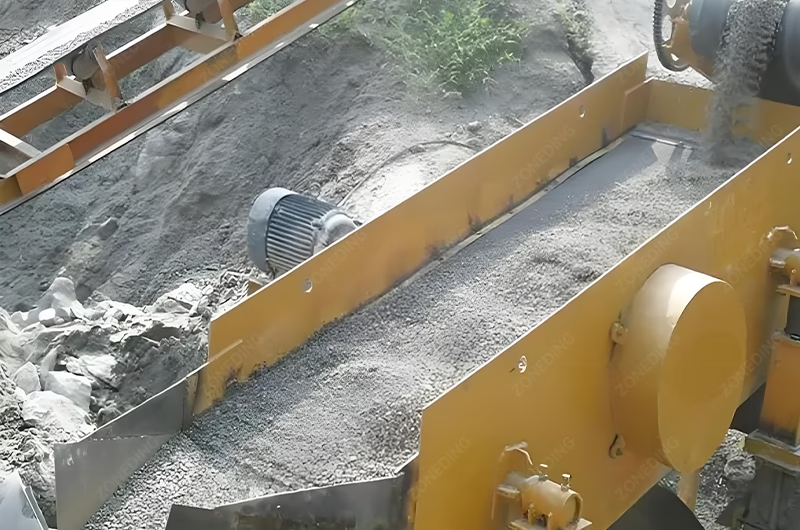
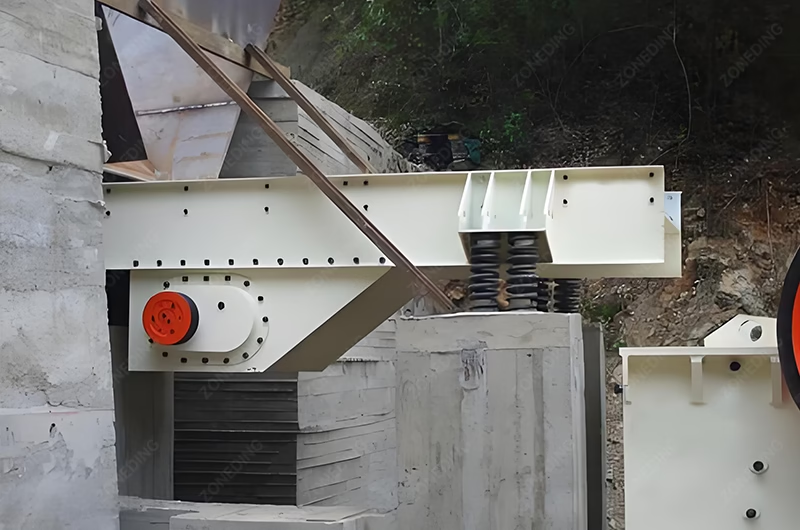
Choosing a vibrating feeder is a foundational decision for any successful crushing operation. By moving beyond a simple size/capacity choice and embracing a holistic, engineering-based approach, you can select a machine that actively boosts your plant’s profitability.
By diligently following this 7-step checklist—analyzing your material, defining capacity, smartly specifying the grizzly, and evaluating the true TCO—you can transform your feeder from a simple conveyor into a high-performance production tool. This investment in the right machine at the very start of your process will pay continuous dividends through higher throughput, lower wear costs, and superior reliability.
At ZONEDING, we build partnerships, not just machines. As a factory-direct manufacturer since 2004, we have a deep understanding of the entire crushing process, from the quarry face to the final product stockpile. Our approach gives you a distinct advantage:
Don’t let an incorrect feeder choice bottleneck your profits. Contact the ZONEDING experts today for a free analysis of your feeding application and a detailed, no-obligation quotation.
Are you struggling with inefficient mineral separation, leaving valuable materials behind? Are you experiencing low recovery rates and high operating costs? This comprehensive guide will give all the details about shaking tables. Shaking...
View detailsAre you looking for a more flexible and cost-effective way to process rock, ore, or construction waste? A mobile crusher could be the perfect solution. Instead of hauling materials to a fixed machine, a mobile crushing plant brings the processing...
View detailsAre you watching your profits wash away with your wastewater? In many sand washing plants, a significant amount of fine sand (75 microns / 200 mesh and smaller) escapes with the overflow water. This isn't just waste; it's lost product and lost re...
View detailsGold extraction is the industrial process of separating pure gold from the rock, or ore, that holds it captive. At my company, ZONEDING, we have been building the specialized machinery for this complex process since our founding in 1990. You mus...
View details